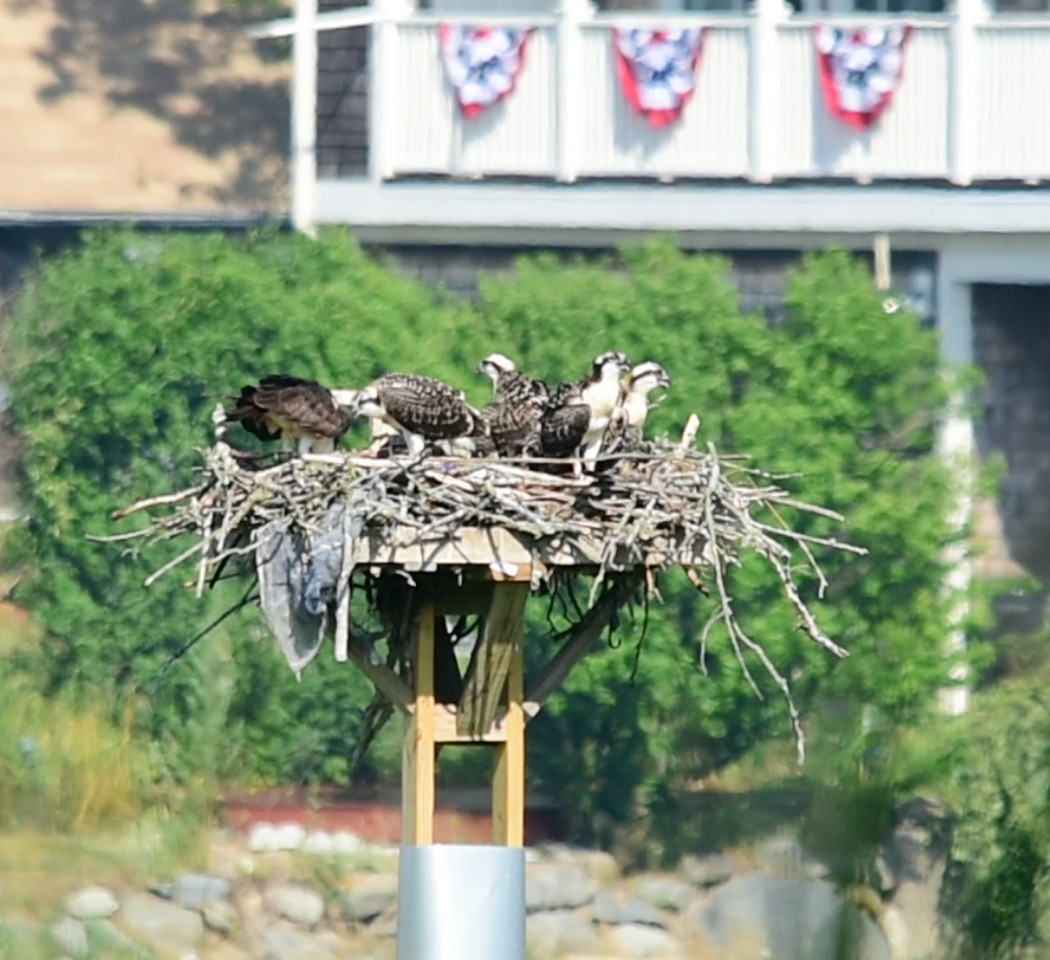Osprey population soaring in Barrington
Town hosted 42 fledglings in 2016
Once on the cusp of eradication, ospreys continue to make an impressive recovery in the Ocean State.
And nowhere else in Rhode Island did more ospreys fledge last year than in Barrington. According to the Audubon Society of Rhode Island's osprey report, Barrington played host to 42 osprey fledglings in 2016. That's one better than South Kingstown's 41 and more than double Bristol's 18.
So, why are more ospreys fledged in Barrington than in other towns in Rhode Island?
"Food, food, food," said Jon Scoones, the director of volunteer services for the Audubon Society of Rhode Island.
Mr. Scoones said osprey are drawn to Barrington because of its estuaries and coves, its wide stretches of shallow water where a fishing bird can fare well.
Osprey eat fish — researchers estimate that 98 percent of ospreys' diets are fish. Mr. Scoones said osprey will eat trout and herring and other freshwater fish when they're hunting above lakes and ponds, and striped bass, blues and other saltwater fish when they're above saltwater.
Mr. Scoones said he has even seen osprey swoop down and snare goldfish from peoples' backyard ponds.
The recent strong breeding year marks a trend for osprey in the area — in 2014 there were 186 ospreys fledged in Rhode Island; that figure increased to 239 in 2015 and rose to 297 in 2016.
That's a stark contrast from years ago when osprey numbers dwindled badly and many nests failed to yield fledglings. According to the Audubon Society's Osprey Report, there were just eight fledglings in 1977.
Mr. Scoones said DDT was mostly to blame. The powerful pesticide was used to kill mosquitos and other insects, but also affected numerous other animal species.
"It was a cure-all for mosquitos and other bugs back in 50s," Mr. Scoones said.
Officials eventually recognized the disastrous impact of the pesticide and made an effort to reduce its use, said Mr. Scoones.
Meanwhile, an effort began to help enhance parts of the Rhode Island coastline, making it more inhabitable for osprey. Volunteers erected platforms — in Barrington, man-made platforms popped up in Hundred Acre Cove, Rumstick Point, Allin's Cove, and other areas — while the Audubon Society continued with its monitoring program. This year, more than 100 people volunteered for the program.
The work has yielded a resurgence in osprey. Where in years past people were rare to see an osprey soaring in the sky above Barrington, now that occurrence has grown to commonplace.
Part of the success, said Mr. Scoones, should be credited to government and non-profit agencies that have worked to clean up local waters. Mr. Scoones said organizations such as the Rhode Island Department of Environmental Management and Save The Bay have helped improve water quality in Narragansett Bay and the surrounding coves and estuaries, which helps improve fish stocks, which, in turn, helps osprey and other fish-hunting birds.
"It's a whole, big equation," he said.
Mr. Scoones said while osprey sightings have increased, so too have bald eagles sightings.
Mr. Scoones said the osprey found in New England during the warmer months migrate to points south — including Cuba and South America — in the winter. Mr. Scoones said there is a thriving population of osprey in Florida but those birds do not migrate.







